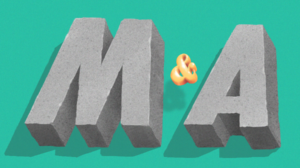The cryptocurrency markets are often referred to as the “Wild West” of finance and fintech: A dog-eat-dog world, somewhat hazy from a legal perspective, too complex to even begin attempting any kind of order or control. And indeed, back in the heady days of the 2017 ICO boom, that description was perhaps justified, considering the many stories of shady operators selling get-rich-quick schemes to wide-eyed newcomer investors.
Subscribe to the Crunchbase Daily
By and large, those days are now behind us. In fact, crypto’s biggest players are beginning to take steps to reign in policies that represent a more extreme deviation from standard practice in the mainstream markets.
In late July, Sam Bankman-Fried, CEO of one of the larger crypto exchanges, FTX, announced that the company would reduce the available leverage from 100x to 20x to encourage “responsible trading.” Soon after, Changpeng Zhao, CEO of rival exchange Binance, followed suit.
Regulators are increasingly circling the crypto markets—an inevitable development now that cryptocurrencies are a multitrillion-dollar asset class. And the discussion becomes more intricate when we move onto the question of, unlike FTX and Binance, decentralized platforms and applications.
Let’s talk about decentralized governance
Blockchain governance is a somewhat arcane topic, but anyone who’s asked “Who controls a blockchain?” will have touched on some aspects of it.
Beyond the question of how transactions are confirmed, there are broader questions of the functionality that the blockchain can support, how it gets upgraded and developed, and how incentives are distributed, among others.
On many platforms, like Ethereum or even on the Bitcoin blockchain, these matters are handled off-chain between a group of core developers and the miners. However, if we take Ethereum as an example, Ethereum governance rarely extends to what happens on-chain. Over the years, Ethereum has been misused to issue scam tokens, set up unstable smart contracts, and had millions of dollars worth of value drained from it in more than 100 hacks. Only once has the Ethereum governance intervened. In doing so, it split the Ethereum blockchain and community forever.
From this perspective, it’s easy to see why a decentralized financial ecosystem based on such a platform makes regulators uneasy. And it’s also easy to see how far-reaching, draconian regulation could easily decimate such an ecosystem that has no wholesale way of making itself compliant.
On-chain vs. off-chain
The Ethereum method of governance isn’t the only one in use, and a small number of projects take a different approach, known as on-chain governance.

On-chain governance defers decision-making responsibility to those who hold the network’s token, with their voting rights programmed into their tokens, and as such, their voting weight is linked to their financial investment. Tezos is one platform that has put the concept of on-chain governance at the core of the way it operates.
In the Tezos environment, the network is run by “bakers” or block validators elected by XTZ token holders. Bakers can make on-chain proposals for any changes they’d like to see in the network, and the other bakers vote on the change. Token holders simply move their tokens to the bakers who are voting in line with their preferences.
Tezos isn’t the only example of a project running on-chain governance, but it’s one that takes a comprehensive on-chain approach to governance. Another example is Polkadot, which operates an even more developed approach.
Polkadot allows its DOT token holders to vote on-chain for the participants in the Polkadot Council, who hold responsibility for proposing matters on which the community can vote.
However, Polkadot goes a step further by allowing DOT holders a say in which projects are permitted to operate in the Polkadot ecosystem. To secure one of Polkadot’s coveted parachain slots, projects must participate in an auction process. They can participate in crowd loans to gather enough funds for a successful bid, allowing DOT holders to stake their tokens to the applications they want to see on-chain.
Building consumer brands
So why are centralized entities and decentralized projects taking steps to regulate themselves now? Part of it is likely because they know that regulators will eventually catch up with them.
The other, perhaps more meaningful, reason is that crypto companies are maturing into the realization that they are operating in an increasingly competitive environment in which they need to ensure they appeal to consumers.
The Wild West reputation may appeal to a small group of risk-seeking investors, but the vast majority of consumers would be put off by the idea of trusting their online cash to an outfit that’s akin to an online casino operator.
With an eye on mass adoption, blockchain operators increasingly realize that they need to project a cleaner, more professional image.
In doing so, they’re charting the same path that companies like Google, Facebook and Amazon did at the turn of the century. Similar to how the World Wide Web evolved into a stable, near-universal technology, the cryptocurrency universe stands poised to become just as much as part of the fabric of our society tomorrow.
So, contrary to the old perceptions that still pervade, the cryptoverse is learning to apply self-governance. The fact that some of the leading figureheads and projects are already establishing a new status quo indicates the shift is well underway.
After all, these early pioneers are writing the next chapter in the development of the financial industry. Despite the concerned voices coming from Capitol Hill, they’re willing to show that they’re taking their responsibility seriously.
Reuben Jackson is a blockchain security consultant, helping organizations with data structures. Outside his nonexistent office hours, Jackson reports and writes opinions on the blockchain/crypto space. He previously wrote about CBDCs and NFTS for Crunchbase News.
Illustration: Dom Guzman

Stay up to date with recent funding rounds, acquisitions, and more with the Crunchbase Daily.



![Illustration of stopwatch - AI [Dom Guzman]](https://news.crunchbase.com/wp-content/uploads/Halftime-AI-1-470x352.jpg)





67.1K Followers